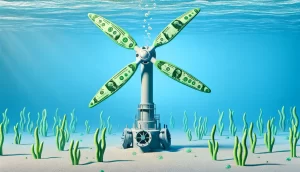This is part one of a two-part series on the different technologies used to provide power in the deep sea for ocean exploration. In this first installment I’ll highlight the unique technologies used to store and transport power to this remote location.
The ocean depths are a cold, dark, and mysterious place that few people have visited. According to the National Oceanic and Atmospheric Administration (NOAA) “more than eighty percent of our ocean is unmapped, unobserved, and unexplored” [1]. In terms of surface area that is about 288 million square kilometers, almost twice that of all the land-area on our planet.
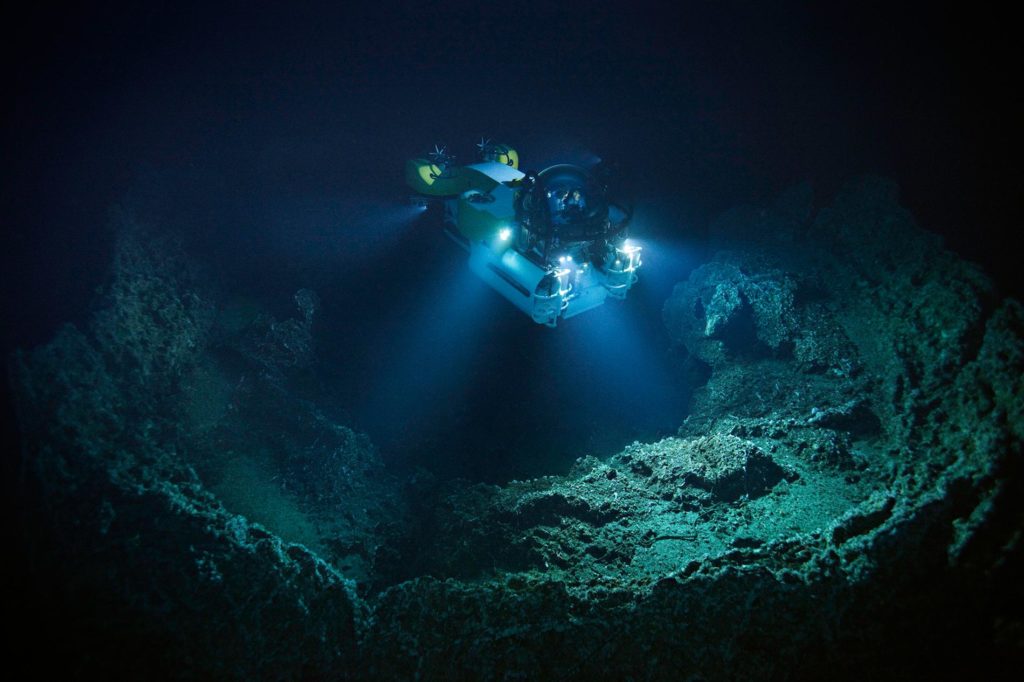
Why would we want to explore this dark place? Exploration means discoveries of new species, ecosystems, and natural resources. These discoveries in turn lead to new medicines, technological and scientific breakthroughs, economic development, and most importantly a better understanding of our planet and how we can better protect it.
There are many tools used to probe the depths and collect data. Being an area that humans can’t easily visit we’ve come up with all sorts of creative instruments, tools, and robots that we can send in our stead. These devices measure things such as underwater noise, water chemistry and quality, water flow, tectonic activity, or even biological growth.
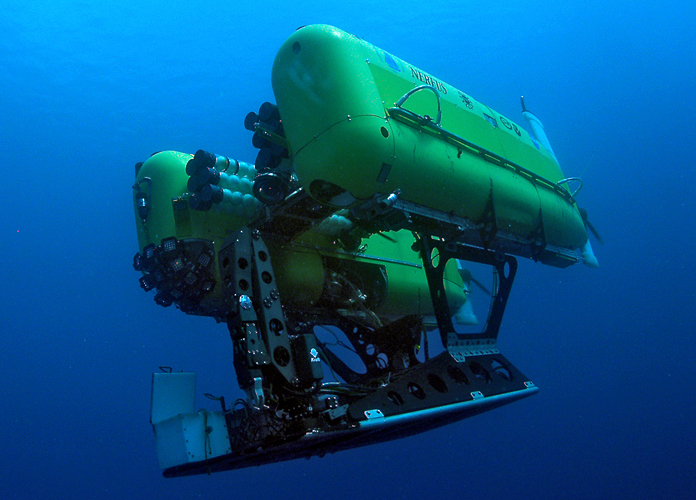
Operating in the Deep
Designing instruments to work in the deep is no simple task. First is the obvious challenge of temperature and pressure. Roughly every 33 feet you descend adds the weight of another entire atmosphere; after a couple thousand feet the pressure is immense. It’s also cold, barely above freezing when you get to depths of a couple thousand feet. Less obvious however are the energy challenges.
Most of these instruments and robots rely on electrical power, but in the deep this is in short supply. As a result, many tools and instruments have been designed to minimize energy consumption, researchers program them to operate with low duty cycles (the ratio of time spent on to time spent off for a device operating intermittently), or simply limit the time the instrument spends underwater entirely. Reduced time underwater with low-power sensors and low-duty cycles mean we aren’t collecting as much data as we could on these unique environments.
In recent years there have been a number of new energy technologies that are changing how we explore and monitor the deep sea. When it comes to providing power in this unique location there are two options: energy can be delivered from somewhere else via cable or storage system or it can be generated on site using natural resources. In this two part series I’ll highlight some of the different energy technologies being used to reduce power constraints and enable better ocean exploration. This isn’t meant to be exhaustive, but rather to give you an idea of what’s out there.
Batteries
Batteries are a common solution in the offshore industry to provide temporary power in remote areas as they are fairly cheap and reliable. Lithium ion (LiON), nickel-metal hydride (NiMH), nickel cadmium (NiCd), and lead acid are some of the most common types [2] and you’ve probably seen these in your cell phone or car. The basic principle for all these batteries is the same: they convert chemical energy to electrical energy through chemical processes, the specific reactions depend on the type of battery.
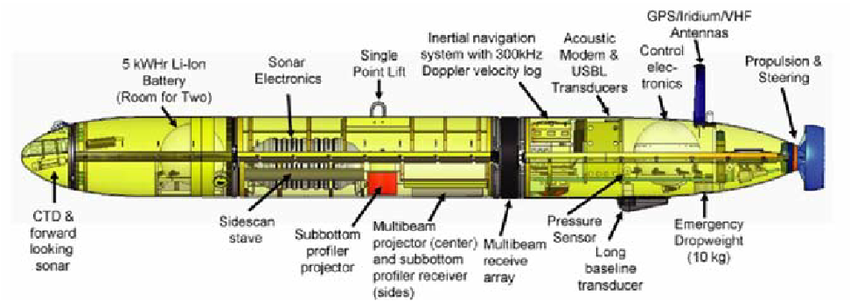
All batteries are limited in their energy storage capacity however. In those systems that use batteries in deep sea applications, researchers and engineers are extremely careful to minimize power consumption when using battery power to extend its life for as long as possible since recovering the system is generally neither easy nor cheap. For something like an unmanned underwater vehicle, this means that the vehicle is limited in the time it can spend underwater collecting data.
When battery powered systems run out of power at sea they are difficult to find and costly to recover, which means that unfortunately many of them end up as expensive rubbish on the bottom of the ocean. Argo floats are an example of this: there are now over 10,000 of these battery-powered devices that have been lost at sea as you can see in this map below.
[iframe src=”https://www.google.com/maps/d/embed?mid=1pcSrqmzTcyq-HF4hoSP1OsKzb3KNabkR&hl=en” width=”640″ height=”480″]
Seeing these limitations of traditional batteries, Open Water Power has developed a different battery altogether. The MIT spinout (now owned by L3 Technologies) developed a novel aluminum seawater battery which they claim provides a ten-fold increase in range for underwater vehicles over regular LiON batteries [3]. What makes this battery unique is that it operates in a flooded condition and uses seawater to drive the chemical reaction to produce electricity. There are a number of other aqueous type batteries, such as a lithium seawater batteries that the US Navy is investigating [4][5], but these are not in widespread use and have typically have less power output than their dry counterparts.
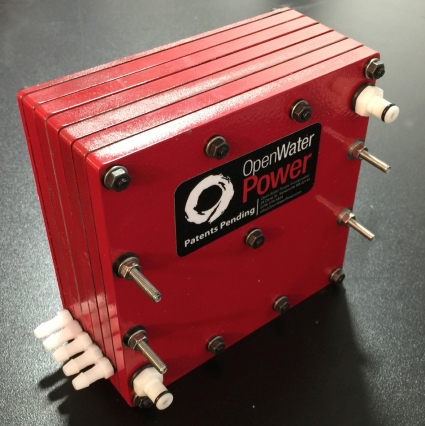
There are some more unique energy storage methods that are less common still. Two different methods, referred to as underwater compressed air energy storage and underwater pumped hydro storage, use pressure instead of chemical reactions to generate power. In underwater compressed air energy storage, pliable bags situated at great depth are inflated via an air compressor on shore. When power is needed, the air is released from the bags to drive a pneumatic turbine and generator. In underwater pumped hydro, large concrete spheres placed deep underwater allow high-pressure water into the sphere to drive a hydraulic turbine and generator. In both cases, external power needs to be provided to ‘recharge’ the systems. You can read more about them here in a separate post.
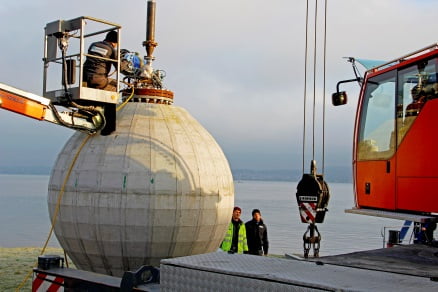
Fuel Cells
Fuel cells differ from a battery in that a steady flow of oxygen and fuel (usually hydrogen) need to be provided to the cell, whereas a battery needs neither. This fuel source requirement means that fuel cells are limited by the capacity of their fuel storage tank, especially for mobile applications like powering cars, ships, and underwater vehicles. Fuel cells come in a variety of types, but the basic theory of operation for each is the conversion of chemical energy into electricity via chemical reactions.
Underwater vehicle operators, like the U.S. Navy, have an interest in fuel cells because they show promise as a replacement for large and heavy batteries that limit underwater vehicle performance. Their energy to weight ratio is an order of magnitude greater than LiON batteries, potentially providing greater range to underwater vehicles while being lighter and taking-up less space. Traditional fuel cells show promise, but they are still temporary power solutions.
Subsea Cables
For certain applications where a more permanent and high capacity energy source is required, batteries and fuel cells won’t work. The solution: the simple extension cord, or a subsea power cable as they’re known in the industry.

Subsea power cables are pretty much distribution lines like the ones you see on telephone poles, just underwater. They are used to carry power from generation stations on shore over relatively short distances and can deliver high amounts of power [6]. A great example of this is the Cabled Array at the Axial Seamount of the coast of the Pacific Northwest. The cable serving this sensor array provides up to 8 kilowatts of power, allowing researchers to monitor geologic activity on an underwater volcano in real-time 450 kilometers from shore.

The Oil & Gas industry, with its need for subsea high pressure pumps and other high-power equipment is also interested in high power subsea cabling. That’s what led Siemens, along with Chevron, Equinor and other partners to develop the first Subsea Power Grid, essentially a subsea electrical substation. While not a generation source, systems like these make it more cost effective to deliver power to the deep. Cheap is relative though. Subsea cable installation is notoriously expensive, on the order of $28,000 to $90,000 per kilometer of cable depending on the length [7]. This is due to specialized vessels, aptly named cable-laying ships, that must be chartered to install the line.
Getting energy from shore is great if it addresses the need, but sometimes it’s not practical. Perhaps the desired location is too far offshore, doesn’t need energy for ten years of more in a fixed location, or the amount of power needed is too small to justify the costs. In these situations, generating power on site makes more sense.
To summarize: batteries are good for temporary low-power applications and subsea power cables are good for permanent high-power close to shore. In the next part of this series I’ll dive into the unique ways to provide in-situ power in the deep.
References
[1] NOAA Ocean Service – Exploration https://oceanservice.noaa.gov/facts/exploration.html
[2] Abelleira, Maria Teresa Troncoso. “Batteries for Marine Applications”. Norwegian University of Science and Technology. 2013 https://brage.bibsys.no/xmlui/bitstream/handle/11250/238654/649652_FULLTEXT01.pdf?sequence=1
[3] MIT News Office. “Batteries that “drink” seawater could power long-range underwater vehicles”. Matheson, Rob. June 15, 2017
http://news.mit.edu/2017/batteries-drink-seawater-long-range-autonomous-underwater-vehicles-0615
[4] Davis, Russ E.;Sherman, Jeffrey T. “Evaluating a Lithium-Seawater Battery on Gliders” . AMS 100. May 2017 https://journals.ametsoc.org/doi/10.1175/JTECH-D-16-0151.1
[5] Reuters. “Trump says Pentagon to produce lithium sea-water batteries” Saturday 6 Oct 2018
https://www.reuters.com/article/us-usa-military-industry/trump-says-pentagon-to-produce-lithium-sea-water-batteries-idUSKCN1MG01V
[6] JRC Technical Reports. “HVDC Submarine Power Cables in the World” . Ardelean, Mircea; Minnebo, Philip. 2015 http://publications.jrc.ec.europa.eu/repository/bitstream/JRC97720/ld-na-27527-en-n.pdf
[7] International Business Times. “Underwater Internet Cables: ‘Submarine Cable Map’ Shows How The World Gets Online”. Neal, Ryan W.. March 2014.
https://www.ibtimes.com/underwater-internet-cables-submarine-cable-map-shows-how-world-gets-online-1559604

